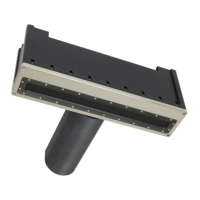APPENDIX III: Multibeam Surveying
9 APPENDIX III: Multibeam Surveying
9.1 Introduction
Multibeam surveying affords the surveyor with many advantages, but it also requires more thought
behind the survey itself.
9.2 Survey Design
Multibeam surveying survey planning is very different than single beam survey planning. The main
considerations are line spacing and line direction. In single beam surveying, lines are normally
spaced based on the scale of the desired chart. The line direction is normally at the discretion of the
surveyor. In multibeam surveying, the surveyor has to plan the survey carefully, with thought to
overlap between adjacent lines and the direction that those lines are run.
9.2.1 Line Spacing
The entire concept of multibeam surveying is based on the swath coverage that defines the
multibeam system. The survey lines should be designed so that there is 100% overlap in coverage
between adjacent lines. As swath width is a function of water depth, it follows that the spacing
between lines may not be constant. Looking at a chart of the survey area, the surveyor should be
able to determine the swath width that will be obtained and can design the line spacing accordingly.
A large overlap in swath coverage is required due to various factors. One prime factor is roll. As the
vessel rolls the swath coverage will vary in relation to this roll. If the vessel rolls to port (port-side
down), the swath coverage on the port side will be lessened, whereas the swath coverage on the
starboard side will increase. If there is not sufficient overlap in swath coverage there could be gaps
in coverage, between adjacent lines, due to the roll.
If the helmsman has problems keeping the vessel on the designated line, this could case gaps if the
vessel goes off line to opposite directions on adjacent lines.
Unexpected shallows will reduce the swath coverage. If the lines are designed with very little
overlap, a shallow area on the lines will see reduced swath coverage and the possibility of gaps
between the lines.
9.2.2 Line Direction
In single beam surveying, the usual practice is to survey normal to the contours. The concept is to
cut the contours at 90° to obtain the best definition of the slope. Multibeam survey is exactly
opposite of this; in multibeam survey the lines are planned to survey parallel to the contours.
Multibeam surveying can be likened to side scan surveying; the best definition is obtained when the
Page 121 of 210
Version 5.0 Rev r002
Date 05-08-2014

